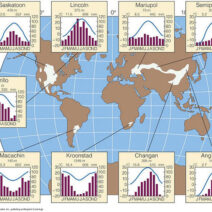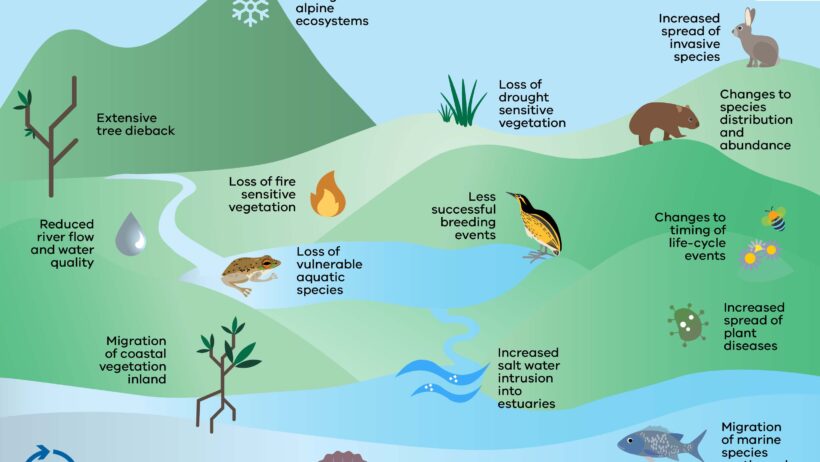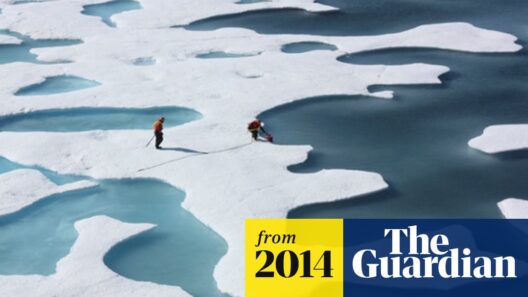Climate change, a term often evoking an array of urgent emotions and concerns, represents one of the most formidable challenges facing the planet today. Its multifaceted impact on the environment encompasses a spectrum of phenomena ranging from alterations in weather patterns to the degradation of ecosystems. Understanding how climate change affects our world is pivotal, as it defines both our present circumstances and future possibilities. This article delves into the various ways climate change manifests, illuminating its implications for the environment.
The Shift in Weather Patterns
As global temperatures rise, one of the most observable effects of climate change is the transformation of weather patterns across the globe. This alteration is not uniform; it generates erratic weather events, increasing both the intensity and frequency of storms, droughts, and heat waves. Regions that were once considered temperate may experience catastrophic floods, while traditionally arid areas face unprecedented dryness.
Particularly alarming is the shifting of climatic zones, which directly affects agricultural practices. Farmers often find themselves grappling with unpredictable growing seasons, leading to various socio-economic repercussions. As certain crops cease to thrive in areas that once supported them, food security is jeopardized, and commodity prices climb. The interdependence of agriculture and climate is thus underscored, epitomizing how climate change reverberates through the fabric of human sustenance.
In addition, the elemental forces of nature become increasingly volatile. Hurricanes and typhoons are now supercharged by elevated sea surface temperatures, resulting in devastating consequences for coastal communities. The destruction is twofold: not only do these natural disasters devastate homes and infrastructure, but they also disrupt ecosystems, displacing wildlife and affecting biodiversity.
Impact on Ecosystems and Biodiversity
Perhaps one of the most profound effects of climate change is its impact on ecosystems and the rich tapestry of biodiversity they support. Altered habitats can lead to a phenomenon known as species migration, where flora and fauna are compelled to relocate in search of more suitable climates. This upheaval can sever long-standing predator-prey relationships and disrupt established ecological balance.
Moreover, climate change poses an existential threat to numerous species. Endangered species like polar bears and corals are particularly vulnerable, facing dire consequences as their habitats undergo drastic transformations. The coral reefs, often dubbed the “rainforests of the sea,” are succumbing to coral bleaching due to warming waters. This phenomenon threatens countless marine species that rely on coral ecosystems for shelter and sustenance.
The loss of biodiversity, in turn, has cascading effects on human health and wellbeing. Ecosystems are not just a backdrop; they provide essential services—clean air, potable water, and fertile soil. When climate change erodes these natural systems, society grapples with a myriad of challenges, from increased respiratory issues due to poor air quality to water shortages. The intricate connections between species, including humans, emphasize the imperative of addressing climate change to preserve the environment and all its inhabitants.
Melting Ice Caps and Rising Sea Levels
The phenomenon of melting ice caps serves as a stark visual representation of climate change. The Arctic and Antarctic ice sheets are diminishing at an alarming rate, contributing to rising sea levels worldwide. This rise poses an existential threat to low-lying coastal areas, where entire communities face displacement and loss of livelihood.
As sea levels continue to rise, saltwater intrusion into freshwater systems is becoming increasingly common. This intrusion compromises essential water supplies, affecting agriculture and drinking water quality in coastal regions. Not only does this threaten the immediate livelihood of local communities, but it also engenders larger geopolitical challenges as populations migrate in search of more hospitable environments.
Furthermore, as the polar ice melts, it releases trapped greenhouse gases like methane, further exacerbating global warming. This feedback loop illustrates the complexity and interconnectivity of climate dynamics, underscoring the urgency of mitigating climate change through sustainable practices and innovative policies.
Combatting Climate Change: A Collective Responsibility
Addressing the multifarious effects of climate change requires concerted effort from individuals, governments, and organizations. Transitioning to renewable energy sources, such as wind and solar, can significantly reduce greenhouse gas emissions. In addition, reforestation and conservation efforts play a crucial role in restoring ecosystems and enhancing biodiversity.
Awareness and advocacy are also paramount. Education about the impacts of climate change fosters an informed populace, capable of making decisions that benefit both the environment and society. Sustainable practices, such as reducing waste, conserving water, and promoting a circular economy, must be integral to our daily lives.
In the face of climate change, collective action can catalyze meaningful change. Collaborative approaches, whether at the local or global level, foster resilience and adaptability. Embracing responsibility not only addresses current challenges but also paves the way for a more harmonious coexistence with our environment.
In conclusion, climate change casts a long shadow over the delicate balance of our ecosystems, influencing weather patterns, threatening biodiversity, and contributing to perilous rises in sea levels. Understanding these complex interactions is essential. Combating climate change is not merely an ecological imperative; it is a moral responsibility to safeguard the planet for future generations. Through awareness, action, and advocacy, the collective endeavor to mitigate its impacts offers a glimmer of hope amidst the challenges posed by a warming world.








